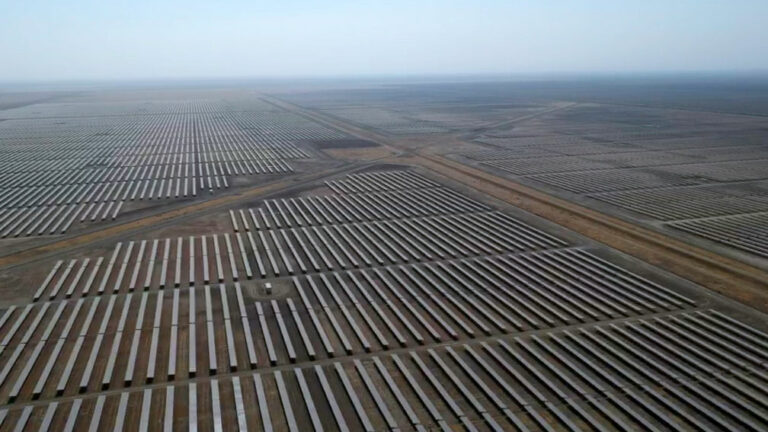<!-
- wp:heading –>Contents
What Is the Climate in the Boreal Forest?
Introduction
The boreal forest, also known as the taiga, is one of the largest biomes on Earth, stretching across the Northern Hemisphere. This biome plays a crucial role in global ecology and climate regulation, with its unique climate significantly shaping its ecosystems.
Geographical Location of the Boreal Forest
The boreal forest primarily spans:
- North America: Covering vast areas in Canada and Alaska.
- Eurasia: Extending through Russia and Scandinavia.
This forest sits just below the Arctic Circle, where it experiences cold and harsh climatic conditions.
Characteristics of Boreal Forest Climate
The boreal forest is characterized by a subarctic climate, which includes:
- Temperature Extremes:
- Winter: Temperatures can plummet to -40°C (-40°F) or lower, lasting for 6 to 7 months.
- Summer: Short summers see temperatures ranging from 10°C to 20°C (50°F to 68°F).
- Seasonal Variation: There is a stark contrast between long, harsh winters and brief, mild summers.
- Low Humidity and Precipitation: Annual precipitation ranges from 30 to 85 cm (12 to 33 inches), primarily as snow during winter[1][2].
Winter Conditions in the Boreal Forest
During winter, conditions are particularly severe:
- Extreme Cold: The landscape is often frozen, with temperatures dropping significantly.
- Snow Cover: Snow blankets the forest for most of the year, providing insulation for plant roots.
- Limited Sunlight: Days are very short, especially in northern areas, contributing to the cold environment.
- Challenges for Flora and Fauna: Plants and animals have adapted various strategies to survive these extended winters[1][2].
Summer Conditions in the Boreal Forest
Summers are brief but vital for ecosystem activity:
- Mild Summers: The growing season lasts typically 1-3 months.
- Long Days: Extended daylight hours, including near 24-hour sunlight in some regions, allow for rapid plant growth.
- Rain and Melting Snow: Snowmelt causes rivers to swell and provides necessary moisture for plants.
- Active Ecosystem: Flora and fauna thrive during this time, taking advantage of the warmth and food availability[2][3].
Impact of Boreal Forest Climate on Flora and Fauna
The boreal forest’s climate has led to specific adaptations:
- Cold-Resistant Plants: Dominated by coniferous trees like spruce, pine, and fir that are well-suited to cold conditions.
- Animal Adaptations: Species such as wolves, lynx, bears, and moose have developed traits like hibernation and thick fur to endure extreme temperatures.
- Permafrost Influence: The presence of permafrost affects vegetation types and soil characteristics[2][3].
Climate Change and Its Impact on the Boreal Forest
Climate change poses significant threats to this biome:
- Rising Temperatures: Increased global temperatures are leading to longer summers and melting permafrost.
- Shifts in Vegetation: Changes in tree distribution are occurring as species migrate northward.
- Wildfire Risk: Warmer and drier conditions heighten the risk of forest fires[3][4].
Frequently Asked Questions (FAQs)
Q1: How cold does it get in the boreal forest during winter?
In the boreal forest, winter temperatures can be extremely low, often dropping to around -40°C (-40°F) or even lower in some areas. Typical winter temperatures range from -20°C (-4°F) to -30°C (-22°F), and the cold season can last for 6 to 7 months, significantly impacting the ecosystem.
Q2: What is the difference between the boreal forest climate and the tundra climate?
The boreal forest is characterized by cold, dry winters and short, cool summers, with a significant presence of coniferous trees. In contrast, the tundra climate features permanently frozen soils (permafrost), very low temperatures year-round, and minimal precipitation. The tundra has a much shorter growing season (approximately 10-12 weeks) compared to the boreal forest, where plant growth is more sustained during the brief summer months.
Q3: How do plants survive the long, cold winters in the boreal forest?
Plants in the boreal forest have adapted to survive harsh winters through several mechanisms:
- Coniferous Trees: Species like spruce and pine retain needle-like leaves year-round, which are coated in a waxy substance to reduce water loss and withstand heavy snow loads.
- Deciduous Trees: Some deciduous species shed their leaves before winter to minimize damage from snow and conserve nutrients for next year’s growth.
- Photosynthesis Timing: Evergreen trees can photosynthesize earlier in spring than deciduous trees due to their needle structure, allowing them to take advantage of the short growing season.
Q4: Are there any animals that hibernate to survive the extreme cold?
Yes, several animal species in the boreal forest hibernate or exhibit other adaptations to survive extreme cold. For instance:
- Bears: Many bear species hibernate during winter months when food is scarce.
- Small Mammals: Animals like ground squirrels enter a state of torpor or hibernation to conserve energy.
Additionally, some birds and larger mammals have adaptations such as thick fur or fat layers that help them withstand cold temperatures without hibernating.
Q5: How is climate change affecting the boreal forest ecosystem?
Climate change is significantly impacting the boreal forest through:
- Rising Temperatures: Increased temperatures are leading to longer summers and milder winters, which can disrupt traditional growth patterns of trees and plants.
- Drier Conditions: Warmer weather contributes to drought stress in trees, making them more susceptible to pests and diseases.
- Wildfire Risk: The risk of wildfires is increasing due to warmer and drier conditions, which can devastate large areas of forest.
- Vegetation Shifts: As conditions change, some tree species are migrating northward while others may decline in southern regions due to unsuitable climates.
These changes threaten biodiversity and may alter the ecological balance within this vital biome.
Conclusion
The boreal forest’s harsh subarctic climate is defined by long winters and short summers. This unique environment plays a critical role in regulating global climate while supporting diverse ecosystems. Understanding its climatic characteristics is essential for recognizing its global significance and addressing ongoing environmental changes.

Kyle Whyte is a notable scholar and professor at the University of Michigan, holding positions such as the George Willis Pack Professor in the School for Environment and Sustainability and Professor of Philosophy. Specializing in environmental justice, his work critically examines climate policy and Indigenous peoples’ ethics, emphasizing the nexus between cooperative scientific endeavors and Indigenous justice. As an enrolled Citizen Potawatomi Nation member, he brings a vital perspective to his roles as a U.S. Science Envoy and member of the White House Environmental Justice Advisory Council. His influential research is supported by various prestigious organizations including the National Science Foundation, and disseminated through publications in high-impact journals. Kyle actively contributes to global Indigenous research methodologies and education, with affiliations to numerous institutes and societies dedicated to traditional knowledge and sustainability. Recognized for his academic and community engagement, Kyle has earned multiple awards and served in various visiting professorships. His efforts extend to leadership positions on boards and committees focused on environmental justice nationwide.
